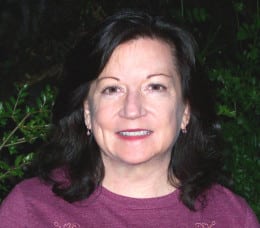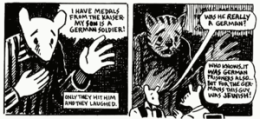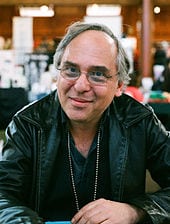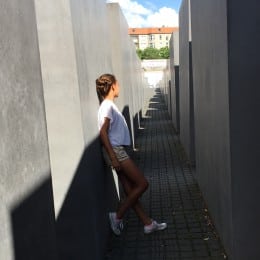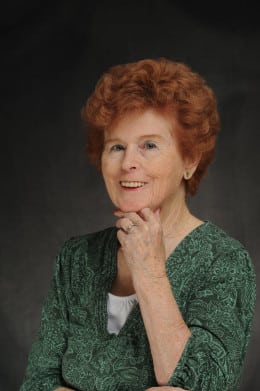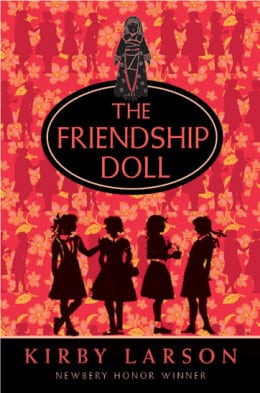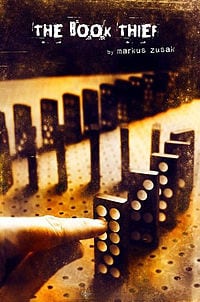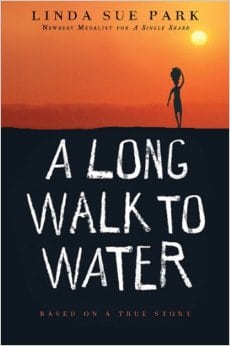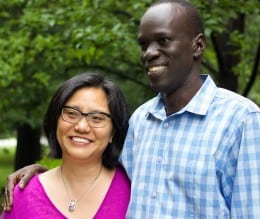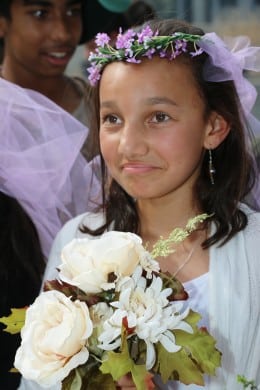 My daughter, Anjuli is studying about the Medieval era at school. Last week her 7th grade class reenacted a Medieval Banquet with trading, jousting, fortune telling, archery, and many other fun activities from that time period.
My daughter, Anjuli is studying about the Medieval era at school. Last week her 7th grade class reenacted a Medieval Banquet with trading, jousting, fortune telling, archery, and many other fun activities from that time period.
The kids and teachers came dressed as ladies, jesters, peasants, nobles, knights, monks, friars, clerics, scribes, merchants, and peddlers, as well as, of course, an honorary king and queen. There was even a priest performing marriages! Anjuli, the bride, partook and looks far from full of bliss tying the marital knot.
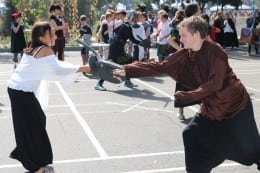 Instead of primping for the marriage ceremony, Anjuli chose to joust with a fellow peasant prior to taking her vows.
Instead of primping for the marriage ceremony, Anjuli chose to joust with a fellow peasant prior to taking her vows.
She walked away with her limbs in tact and a mere few stitches!
As part of her studies of the Medieval era, her English teacher assigned students a creative writing prompt that required each of them to think about what life might have been like at that time. Anjuli chose to write from the peasant point of view and created the fictional character, Lilli of Nottingham.
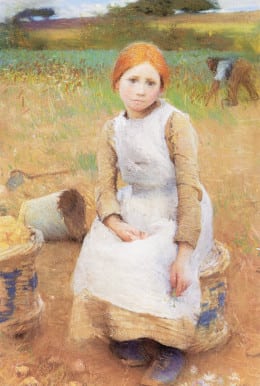
Be sure to read Anjuli’s story below with an old British accent for the full effect.
Drum roll …
A Day in the Life of a Medieval Peasant
by Anjuli Turner
Being at the bottom of the social pyramid isn’t all that bad. No, frankly, it is terrible, miserable shall I say. Working sunrise to sunset is simply exhausting!
I am twelve years old and the eldest child of my family. I have two little brothers. They are both six with not a lot of responsibility, which only adds to my never-ending list of challenging chores.
Yes, my brothers are young but why shan’t they each have at least one of my chores? If only I had a wee bit more time to write in my journal each day, especially with the summer months and longer days fast approaching.
Nottingham, England
Summer is really such a perfect time of the year. All of the divine, beauteous flowers start budding into fruits, the very ones we shall savor over the cold, winter months. And the smell of freshly baked bread from Mother’s oven makes my tummy growl with hunger! I also love …
“Lilli, come hither and help prepare for supper!” My mother shouts.
“Coming!” I holler back, as I stash my journal in a secret hiding place in the privy and push away my thoughts of summer until perchance the next free moment.
 While setting the table, I hear my parents talking amongst each other in hushed voices. They sound pitchkettled and worried, something about past due taxes. Mother reluctantly hands my father her favorite brooch, the one that belonged to her great-grandmother.
While setting the table, I hear my parents talking amongst each other in hushed voices. They sound pitchkettled and worried, something about past due taxes. Mother reluctantly hands my father her favorite brooch, the one that belonged to her great-grandmother.
“Don’t be such a quidnunc!” Mother barks at me. “Fetch your brothers and be sure they wash their hands.”
Once my family is settled at the table, for not a soul wishes to kiss the hare’s foot and mayhap starve waiting for morrow’s next meal. As Mother offers a prayer, we patiently bow our heads and fold our hands together.
Let us give thanks to the beneficent and merciful God, the Father of our Lord, God and Savior, Jesus Christ, for He has covered us, helped us, guarded us, accepted us unto Him, spared us, supported us, and brought us to this hour. Let us also ask Him, the Lord our God, the Almighty, to guard us in all peace this holy day and all the days of our life.
“Grammarcy,” we say in unison.
We have hardly picked up our forks to start eating when Mother asks, “Boys, did you scythe the hay?”
 “Yepperdoodle!” Both say in a hufty-tufty tone with chests puffed out like roosters.
“Yepperdoodle!” Both say in a hufty-tufty tone with chests puffed out like roosters.
I giggle a bit. We all know my brothers dilly-dallied the day away and played hide-and-seek in the woods instead. Still my brothers are dear even if a tad lazy.
Mother raises her eyebrows at them, but the rest of her face is blooming smiles. My brothers are off the hook yet again. Where is the justice?
“And you, Lilli, did you plow the fields, trample the grapes, shear the sheep, herd the pigs, and gather up firewood?” Mother asks.
“With not a moment wasted,” I answer.
“Good girl, then you won’t have a problem scything the hay in the morrow,” she says.
My brothers hoot and keak like hens.
“BUT MOTHER!” I protest.
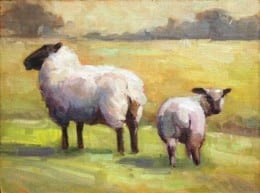 “No buts, Lilli! This is not a question, it’s an order!”
“No buts, Lilli! This is not a question, it’s an order!”
“Prithee, dear Father, surely you have something to say about this?” I plead.
He is wordless! Sometimes he has such a nose of wax!
“This is woodness!” I wolf down the last bite of bellytimber and excuse myself from the table. I don’t wait for Mother’s permission and storm off.
In my escape I let my parents know just how upset I am by slamming the door behind me. I make a mad dash to the apple fields. When I reach my favorite tree, I flop to the ground and lie there gazing up at the dusky sky through the branches and green leaves.
And thither under the tree, I start to dream about another life.
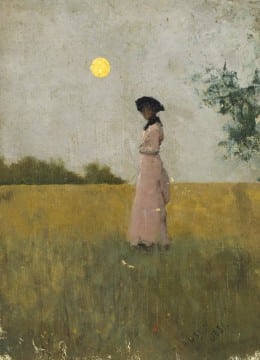 Wind-sucker thoughts creep into my heart and imaginings of a new world emerge. I hardly recognize myself dressed in an elegant, velvet dress clutching a bubble-bow filled with gold coins in one hand and carrying a small lap dog in the other. I am even wearing a matching hat with many feathers and lace-covered gloves. My face is washed and powdered. The dirt underneath my nails is a thing of the past along with my calloused, often bruised hands. I am no longer slouching, but standing especially tall in brand new boots made of leather instead of the usual felt worn by a simple peasant girl. And the blisters that once lived on my feet are also long gone. Words like plow, grapes, sheep, pigs, firewood, and most certainly hay will one day be forgotten, for I dream of becoming a Lady and the fairest flower of the field.
Wind-sucker thoughts creep into my heart and imaginings of a new world emerge. I hardly recognize myself dressed in an elegant, velvet dress clutching a bubble-bow filled with gold coins in one hand and carrying a small lap dog in the other. I am even wearing a matching hat with many feathers and lace-covered gloves. My face is washed and powdered. The dirt underneath my nails is a thing of the past along with my calloused, often bruised hands. I am no longer slouching, but standing especially tall in brand new boots made of leather instead of the usual felt worn by a simple peasant girl. And the blisters that once lived on my feet are also long gone. Words like plow, grapes, sheep, pigs, firewood, and most certainly hay will one day be forgotten, for I dream of becoming a Lady and the fairest flower of the field.




